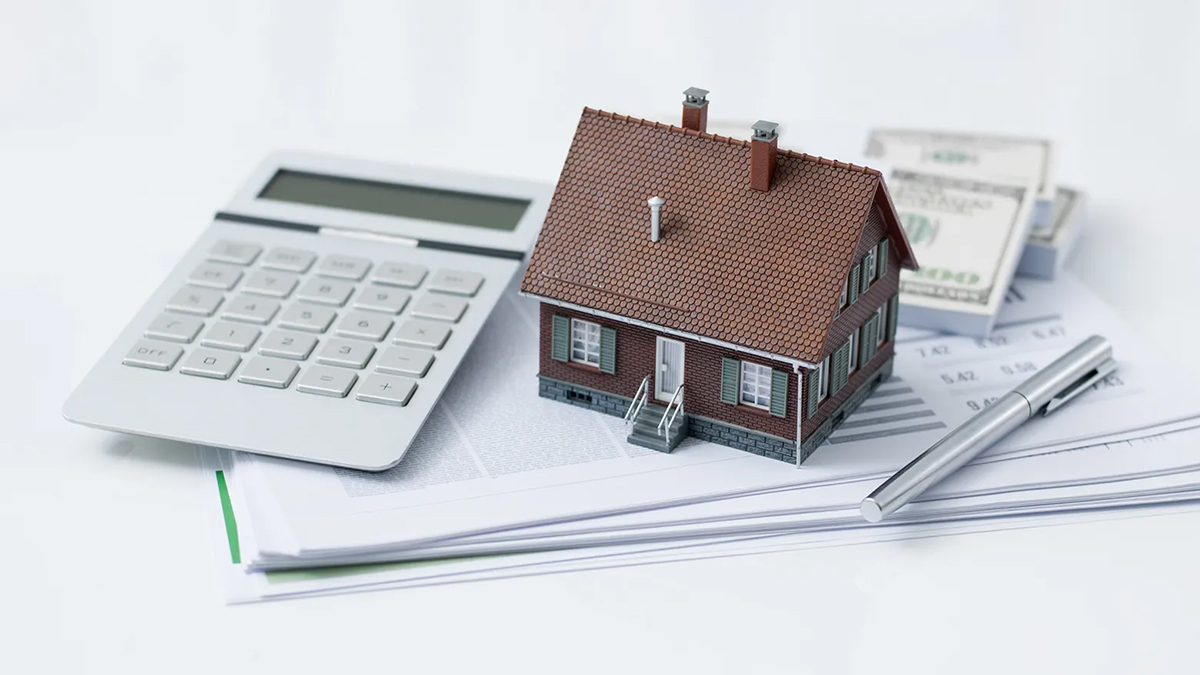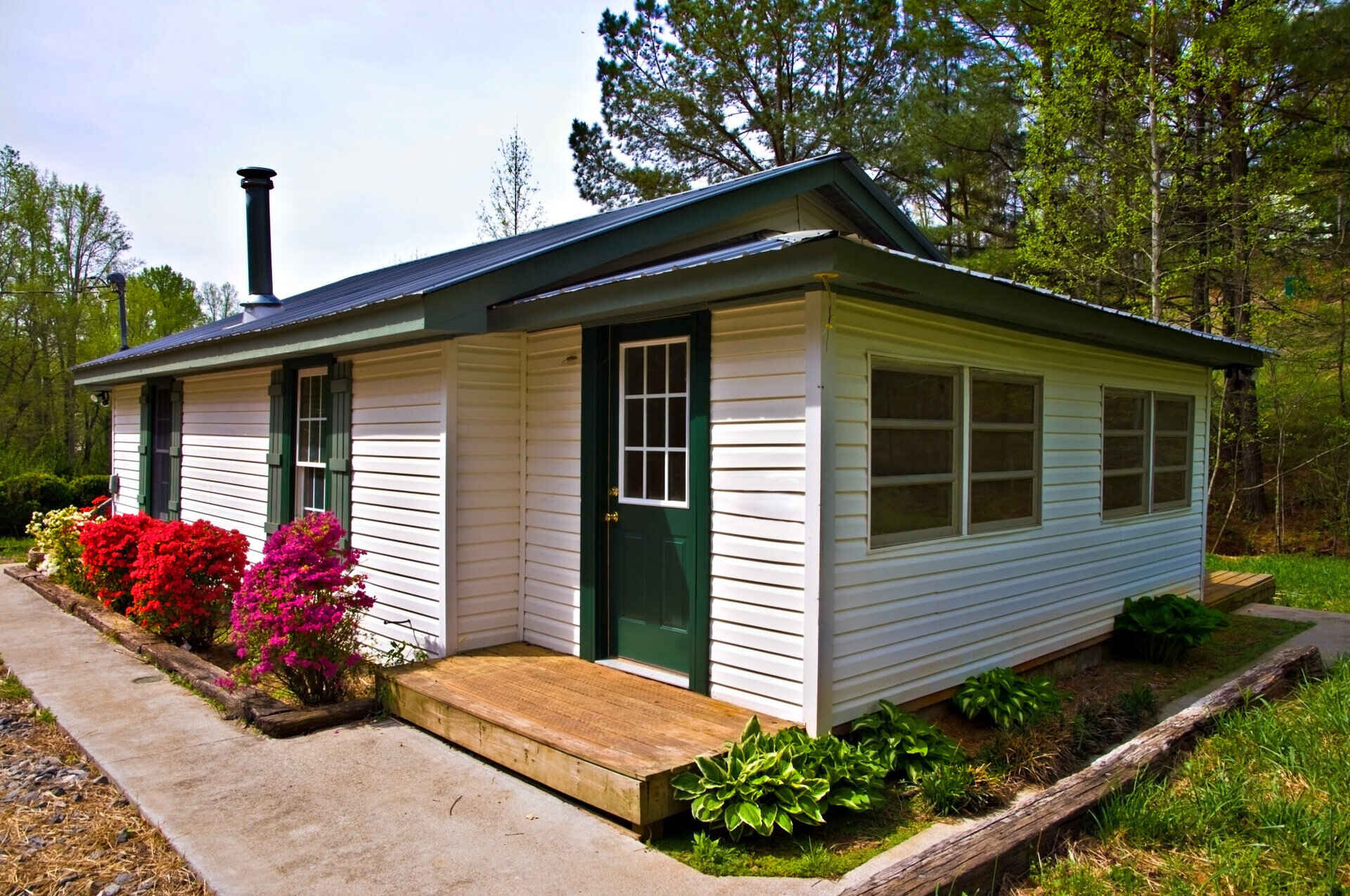Home>Renovation & DIY>Home Renovation Guides>How Home Improvement Loans Work


Home Renovation Guides
How Home Improvement Loans Work
Modified: February 25, 2024
Learn how home improvement loans work and get essential tips and guides for renovating your home. Explore the best options for financing your home renovation projects.
(Many of the links in this article redirect to a specific reviewed product. Your purchase of these products through affiliate links helps to generate commission for Storables.com, at no extra cost. Learn more)
Introduction
Welcome to the world of home improvement, where your dream renovations can become a reality. Whether you’re looking to revamp your kitchen, add a cozy bedroom, or upgrade your outdoor space, home improvement projects can breathe new life into your living space. However, funding these projects can often be a significant hurdle. This is where home improvement loans come into play.
Understanding how home improvement loans work can empower you to transform your living space without draining your savings. In this comprehensive guide, we’ll explore the intricacies of home improvement loans, including the different types available, how to qualify for them, the application process, and how to use and repay them. By the end of this journey, you’ll be equipped with the knowledge to embark on your home improvement endeavors with confidence.
Key Takeaways:
- Home improvement loans provide funding for renovating, remodeling, or repairing homes, offering favorable terms and flexibility for various projects, from kitchen upgrades to outdoor enhancements.
- Qualifying for a home improvement loan involves factors like credit score, income, and property appraisal, empowering homeowners to secure funding for their renovation dreams.
What are Home Improvement Loans?
Home improvement loans are financial products designed to provide funding for renovating, remodeling, or repairing your home. These loans offer homeowners the flexibility to enhance their living spaces without having to rely solely on personal savings or high-interest credit cards. By leveraging a home improvement loan, you can embark on projects that can increase the value, functionality, and aesthetic appeal of your home.
One of the key advantages of home improvement loans is that they are specifically tailored to fund home-related projects, distinguishing them from general personal loans. As a result, these loans often come with favorable terms, such as lower interest rates and longer repayment periods, making them an attractive option for homeowners seeking to invest in their properties.
Home improvement loans can be used for a wide range of projects, including but not limited to:
- Remodeling kitchens and bathrooms
- Adding new rooms or extensions
- Upgrading heating, ventilation, and air conditioning (HVAC) systems
- Enhancing landscaping and outdoor living spaces
- Repairing or replacing roofs, windows, or siding
These loans can provide the financial means to transform your living space according to your vision, whether it involves minor cosmetic updates or major structural changes. By understanding the various types of home improvement loans available and how to qualify for them, you can make informed decisions about the best financing options for your specific renovation projects.
Types of Home Improvement Loans
When it comes to financing home improvement projects, there are several types of loans to consider, each with its own unique features and benefits. Understanding the distinctions between these loan options can help you select the most suitable one for your specific needs.
1. Personal Loans: These unsecured loans are not tied to your home and can be used for various purposes, including home improvements. Personal loans typically offer fixed interest rates and a set repayment schedule, making it easier to budget for your renovation expenses.
2. Home Equity Loans: Also known as a second mortgage, a home equity loan allows you to borrow against the equity in your home. This type of loan often comes with a fixed interest rate and a lump sum payment, making it ideal for large, one-time expenses such as major renovations.
3. Home Equity Line of Credit (HELOC): Similar to a credit card, a HELOC provides a revolving line of credit based on the equity in your home. You can withdraw funds as needed, up to a predetermined limit, and only pay interest on the amount you use. This flexibility makes a HELOC a popular choice for ongoing or phased home improvement projects.
4. Cash-Out Refinance: With a cash-out refinance, you can replace your existing mortgage with a new one that has a higher principal balance, allowing you to receive the difference in cash. This option is suitable for homeowners who have built up significant equity and want to secure a lower interest rate while accessing funds for renovations.
5. Government-Backed Loans: Programs such as the Federal Housing Administration (FHA) Title I loans and energy-efficient mortgages (EEMs) offer government-backed financing for home improvements. These loans often have lenient qualification requirements and can be used for a wide range of renovation projects.
Each type of home improvement loan has its own eligibility criteria, interest rates, and repayment terms. By carefully evaluating the features of each option in relation to your financial situation and renovation goals, you can choose the most advantageous loan for your home improvement endeavors.
How to Qualify for a Home Improvement Loan
Qualifying for a home improvement loan involves meeting certain criteria set by lenders to ensure that you have the financial stability to repay the borrowed funds. While the specific requirements may vary depending on the type of loan you choose, there are several common factors that lenders typically consider when evaluating loan applicants.
1. Credit Score: Your credit score is a crucial determinant of your creditworthiness. Lenders use this three-digit number, based on your credit history and financial behavior, to assess the risk of lending to you. A higher credit score often translates to more favorable loan terms, including lower interest rates and higher borrowing limits.
2. Income and Employment: Lenders will review your income and employment status to ensure that you have a stable source of income to support the loan repayments. Consistent employment and a steady income stream can strengthen your loan application and increase your chances of approval.
3. Debt-to-Income Ratio: This ratio compares your monthly debt payments to your gross monthly income. Lenders use this metric to gauge your ability to manage additional debt responsibly. A lower debt-to-income ratio indicates that you have sufficient income to cover your existing debts and the proposed loan payments.
4. Equity: For home equity loans and HELOCs, the amount of equity you have in your home is a critical factor. Lenders may require a minimum level of equity to qualify for these loans, as it serves as collateral to secure the borrowed funds.
5. Property Appraisal: If your loan is secured by your home, the property may need to be appraised to determine its current market value. Lenders use the appraisal to assess the collateral’s worth and ensure that it aligns with the loan amount being requested.
6. Documentation: Be prepared to provide documentation such as tax returns, bank statements, and proof of assets to support your loan application. Lenders may also require details about the planned home improvements and estimates from contractors to validate the purpose of the loan.
By understanding the qualification criteria for home improvement loans, you can take proactive steps to strengthen your financial profile and improve your chances of securing the necessary funding for your renovation projects. Additionally, consulting with lenders or financial advisors can provide valuable insights into the specific requirements for each type of home improvement loan.
When applying for a home improvement loan, make sure to research and compare different lenders to find the best interest rates and terms that fit your budget.
Applying for a Home Improvement Loan
Once you’ve determined the type of home improvement loan that aligns with your renovation plans and financial circumstances, the next step is to initiate the application process. Applying for a home improvement loan involves several key stages, each of which plays a crucial role in securing the necessary funding for your renovation projects.
1. Evaluate Lenders: Start by researching and comparing lenders that offer home improvement loans. Consider factors such as interest rates, loan terms, fees, and customer reviews to identify reputable and competitive lending options.
2. Prequalification: Many lenders offer prequalification, which provides an estimate of the loan amount, interest rate, and terms you may qualify for based on a preliminary review of your financial information. This step can help you gauge your borrowing capacity and narrow down your loan options.
3. Complete the Application: Once you’ve selected a lender, you’ll need to complete a formal loan application. This typically involves providing personal and financial details, including income, employment history, assets, and the purpose of the loan.
4. Submit Documentation: Prepare and submit the required documentation to support your loan application. This may include recent pay stubs, tax returns, bank statements, and any additional information requested by the lender.
5. Property Assessment: For loans secured by your home, the lender may conduct a property appraisal to assess its value and ensure that it meets the loan requirements. This step is essential for determining the amount of equity available for the loan.
6. Loan Approval: After reviewing your application and documentation, the lender will make a decision regarding your loan approval. If approved, you’ll receive a formal loan offer outlining the terms and conditions, including the interest rate, repayment schedule, and any associated fees.
7. Closing the Loan: Once you accept the loan offer, the closing process begins. This involves signing the necessary paperwork, including the loan agreement and any other relevant documents. For home equity loans and HELOCs, there may be a mandatory waiting period before the funds are disbursed.
By following these steps and providing accurate and complete information, you can streamline the application process and enhance your chances of securing a home improvement loan that meets your renovation needs. It’s important to communicate openly with the lender, address any inquiries promptly, and stay informed about the progress of your application to ensure a smooth and efficient lending experience.
Read more: How To Get A Loan To Do Home Improvements?
Using a Home Improvement Loan
Once you’ve successfully obtained a home improvement loan, you can strategically utilize the funds to enhance your living space and bring your renovation vision to life. The flexibility and financial support provided by the loan enable you to undertake a wide range of home improvement projects, from minor upgrades to major renovations.
1. Project Planning: Before diving into your home improvement endeavors, it’s essential to create a detailed plan outlining the scope of the projects, estimated costs, and timelines. Consider obtaining quotes from contractors and suppliers to accurately allocate the loan funds and ensure that your renovation goals align with your budget.
2. Quality Materials and Workmanship: With the financial backing of a home improvement loan, you have the opportunity to invest in high-quality materials and skilled labor for your projects. Whether it’s upgrading fixtures, installing energy-efficient systems, or implementing structural enhancements, prioritizing quality can enhance the longevity and value of your home.
3. Comprehensive Renovations: Home improvement loans empower you to tackle comprehensive renovations that can elevate the functionality, aesthetics, and comfort of your home. From kitchen remodels and bathroom upgrades to room additions and outdoor transformations, the loan funds can be allocated to various aspects of your property, amplifying its appeal and livability.
4. Energy-Efficient Upgrades: Consider incorporating energy-efficient upgrades into your home improvement projects. This may include installing solar panels, upgrading insulation, or replacing old appliances with energy-saving models. Not only can these enhancements contribute to environmental sustainability, but they can also lead to long-term cost savings on utility bills.
5. Value-Adding Enhancements: Strategically allocate the loan funds to renovations that can increase the overall value of your home. This may involve enhancing curb appeal, modernizing interior spaces, or addressing structural issues to boost the market value and appeal of your property.
6. Project Oversight and Management: Throughout the renovation process, it’s important to oversee the projects and ensure that the allocated funds are utilized effectively. Maintaining open communication with contractors, adhering to the planned timelines, and addressing any unforeseen challenges can help you achieve successful and satisfying outcomes.
By leveraging a home improvement loan thoughtfully and purposefully, you can embark on transformative renovations that elevate the functionality, comfort, and appeal of your home. Careful planning, prudent allocation of funds, and a focus on quality can maximize the impact of your home improvement endeavors, resulting in a space that truly reflects your vision and lifestyle.
Repaying a Home Improvement Loan
As you embark on your home improvement journey with the support of a loan, it’s essential to understand the repayment process and effectively manage your financial obligations. Repaying a home improvement loan involves adhering to the agreed-upon terms and making timely payments to fulfill your financial commitment. Here are key considerations for managing the repayment of your home improvement loan:
1. Loan Terms and Schedule: Familiarize yourself with the specific terms of your loan, including the interest rate, repayment period, and monthly installment amount. Understanding these details is crucial for budgeting and planning your finances accordingly.
2. Budgeting and Financial Planning: Incorporate the loan repayment into your overall budget and financial planning. Prioritize setting aside funds for the monthly installments to ensure that you can meet your repayment obligations without straining your finances.
3. Automatic Payments: Consider setting up automatic payments for your home improvement loan to avoid missing deadlines and incurring late fees. Many lenders offer this convenient option, which can streamline the repayment process and provide peace of mind knowing that your payments are consistently made on time.
4. Extra Payments and Prepayment: If your financial situation allows, consider making extra payments or prepaying on your home improvement loan. Doing so can help reduce the overall interest paid and shorten the repayment period, potentially saving you money in the long run.
5. Financial Windfalls: If you receive unexpected financial windfalls, such as bonuses, tax refunds, or inheritances, consider allocating a portion of these funds towards accelerating the repayment of your home improvement loan. This proactive approach can expedite the payoff process and reduce the overall interest costs.
6. Open Communication with Lender: In the event of financial challenges or unforeseen circumstances that may impact your ability to make payments, maintain open communication with your lender. They may offer assistance or alternative arrangements to help you manage your loan obligations effectively.
7. Loan Refinancing or Consolidation: If you have multiple loans or are facing challenges with high-interest rates, explore the option of refinancing or consolidating your home improvement loan. This can potentially result in more favorable terms and a more manageable repayment structure.
By diligently managing the repayment of your home improvement loan, you can fulfill your financial commitment while maintaining a healthy financial outlook. Consistent and responsible repayment not only ensures the successful completion of your loan but also contributes to building a positive credit history, which can benefit your financial standing in the long term.
Conclusion
Embarking on home improvement projects is an exciting endeavor that can breathe new life into your living space and enhance the comfort and functionality of your home. With the availability of home improvement loans, homeowners have the opportunity to transform their renovation dreams into reality without depleting their savings or resorting to high-interest financing options.
Understanding the various types of home improvement loans, the qualification process, and the application and repayment procedures is essential for making informed decisions and navigating the financing landscape effectively. Whether you opt for a personal loan, a home equity loan, or a government-backed financing program, each option offers unique advantages that can cater to your specific renovation needs and financial circumstances.
By leveraging a home improvement loan thoughtfully, you can strategically allocate the funds to comprehensive renovations, energy-efficient upgrades, and value-adding enhancements that elevate the appeal and value of your home. Careful planning, prudent budgeting, and a focus on quality materials and workmanship can maximize the impact of your renovation projects, resulting in a living space that aligns with your vision and lifestyle.
As you progress through the repayment phase of your home improvement loan, diligent financial management and responsible payment practices are crucial for fulfilling your loan obligations and maintaining a healthy financial outlook. By adhering to the agreed-upon terms, exploring prepayment options, and staying proactive in your approach, you can successfully navigate the repayment process and achieve financial stability.
In conclusion, home improvement loans serve as a valuable resource for homeowners seeking to revitalize their properties and create spaces that inspire joy and comfort. By arming yourself with knowledge about these financing options and approaching your renovation projects with careful planning and financial prudence, you can embark on a transformative journey that not only enhances your living environment but also contributes to the long-term value and appeal of your home.
Frequently Asked Questions about How Home Improvement Loans Work
Was this page helpful?
At Storables.com, we guarantee accurate and reliable information. Our content, validated by Expert Board Contributors, is crafted following stringent Editorial Policies. We're committed to providing you with well-researched, expert-backed insights for all your informational needs.















0 thoughts on “How Home Improvement Loans Work”